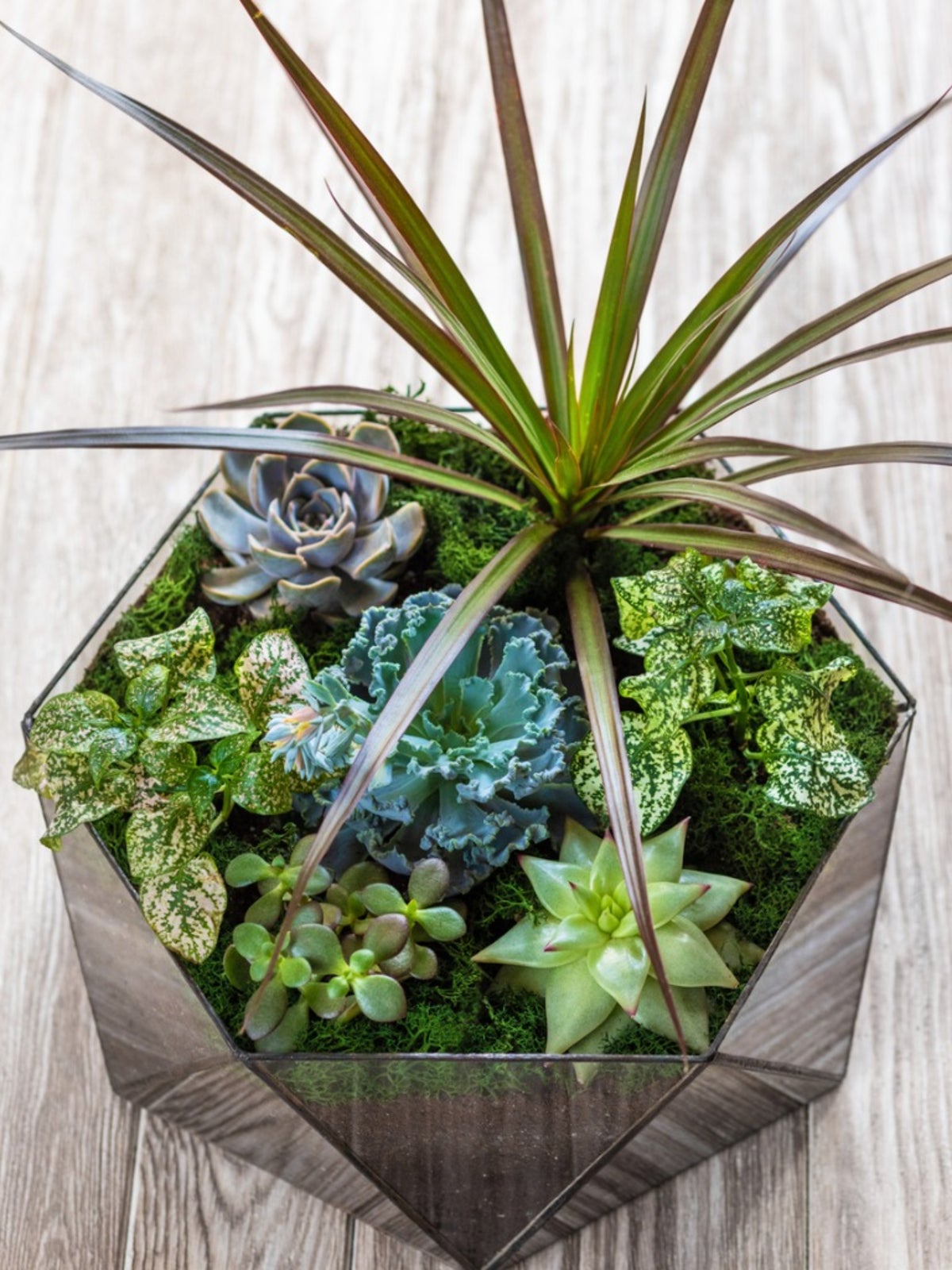Potted Dracaena Pairings – Learn About Plants That Work Well With Dracaena

As common as spider plants and philodendron, so is the houseplant dracaena. Yet, dracaena, with its dramatic upright foliage, also works well with other plants as a complementary accent. What companions are suited for dracaena? The following article contains information on planting with potted dracaena pairings including suggestions for dracaena plant companions.
About Planting with Dracaena
Dracaena is an easy-to-grow and care-for houseplant. There are a number of cultivars that generally differ primarily in height. That said, container growing dracaena will restrict its size. For instance, D. fragrans, or the corn plant dracaena, can grow up to 50 feet (15 m.) in height in its tropical Africa, but inside in a container, it will top out at no higher than 6 feet (2 m.). Depending upon the height of the dracaena plant companions, it may be more likely that you select the smaller Song of India (D. reflexa ‘Variegata’) with its variegated yellow and green leaves that will only attain a height of around 3 to 6 feet (1-2 m.). When choosing plants that work well with dracaena, you must keep in mind its requirements. The nature of companion plantings is to combine plants that have similar light, feeding, and water requirements. Dracaena plants thrive in rich, well-draining potting soil. They only need to be watered well once a week and fed during the growing season (March-Sept.) once or twice. They are not heavy feeders nor do they need to be consistently moist. They need a moderate amount of indirect sunlight as well.
Companions for Dracaena
Now that you know what dracaena’s needs are, let’s look at some possible potted dracaena pairings. When garden centers or florists put together mixed containers, they usually use the rule of “thriller, filler, spiller.” That is, there will be a “thriller” such as the dracaena with some height which will act as the focal point, some low-growing “filler” plants, and a “spiller,” a plant that creates interest by cascading over the edge of the container. Since dracaena is a medium light plant, try accenting it with low to medium blooming annuals such as some colorful impatiens, and then accent with a purple sweet potato vine. You can also mix in perennials such as coral bells, along with some creeping jenny and maybe a petunia or two as well. The number of companion plants is dictated by the size of the container. Be sure to leave them some room to grow if they are not full-sized already. A general rule of thumb is three plants to a container, but if your container is huge, throw the rules out the window and fill in the planter. Keep your “thriller,” the dracaena, towards the center of the container and build out from there. For added interest, not only mix it up by adding perennials and annuals, but also choose plants with different colors and textures, some that bloom and some that don’t. Really, as long as you keep dracaena’s growing requirements in mind (moderate, indirect light, moderate water, and minimal feeding) and accommodate these to your companion choices, your options are limited only by your imagination.
Gardening tips, videos, info and more delivered right to your inbox!
Sign up for the Gardening Know How newsletter today and receive a free copy of our e-book "How to Grow Delicious Tomatoes".

Amy Grant has been gardening for 30 years and writing for 15. A professional chef and caterer, Amy's area of expertise is culinary gardening.
-
 Looking For Plants To Give You The Soft And Fuzzies? Try These 5 Fuzzy Leaf Plant Options
Looking For Plants To Give You The Soft And Fuzzies? Try These 5 Fuzzy Leaf Plant OptionsLovers of texture, drama, silver foliage and tactile plants will adore these special sensory garden additions. These fuzzy leaf plant options will leave you all aglow
By Susan Albert
-
 Get Ready For A Summer Of Hummers! Grow These Full Sun Hummingbird Plants and Flowers
Get Ready For A Summer Of Hummers! Grow These Full Sun Hummingbird Plants and FlowersIf you’re lucky enough to enjoy a sunny backyard, make sure you are maxing out on your pollinator opportunities and grow these full sun hummingbird plants and flowers
By Tonya Barnett